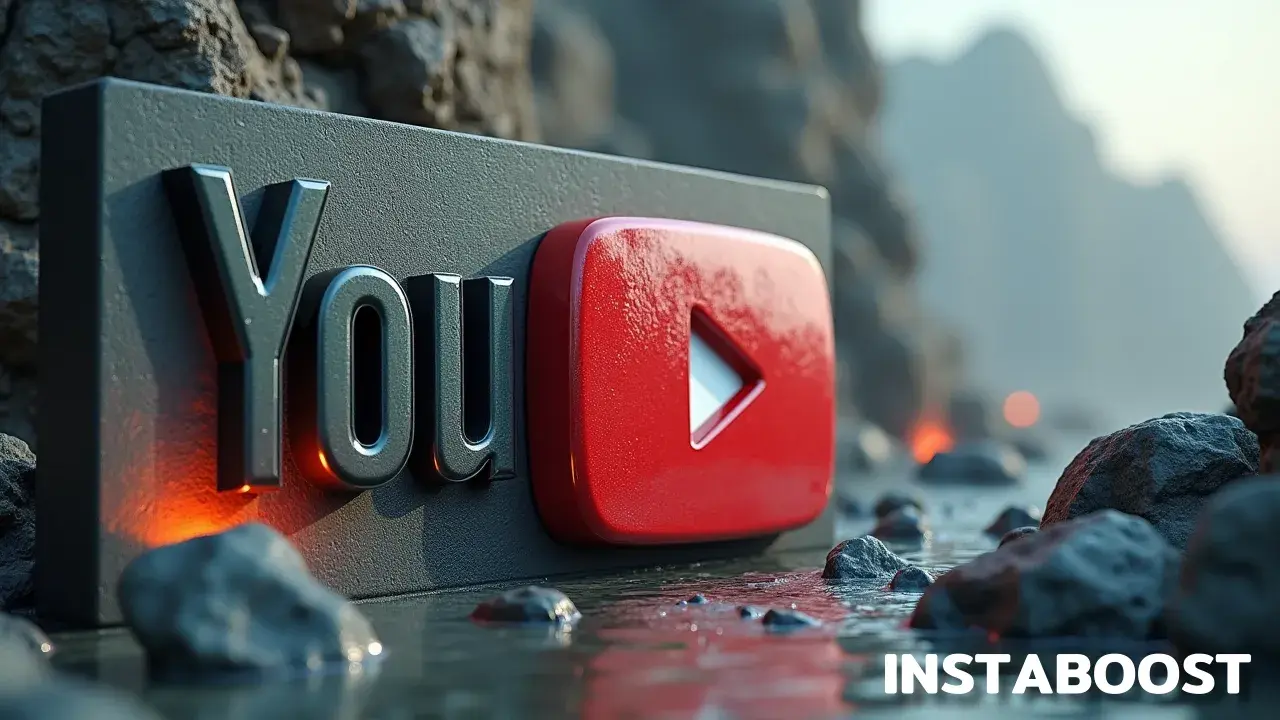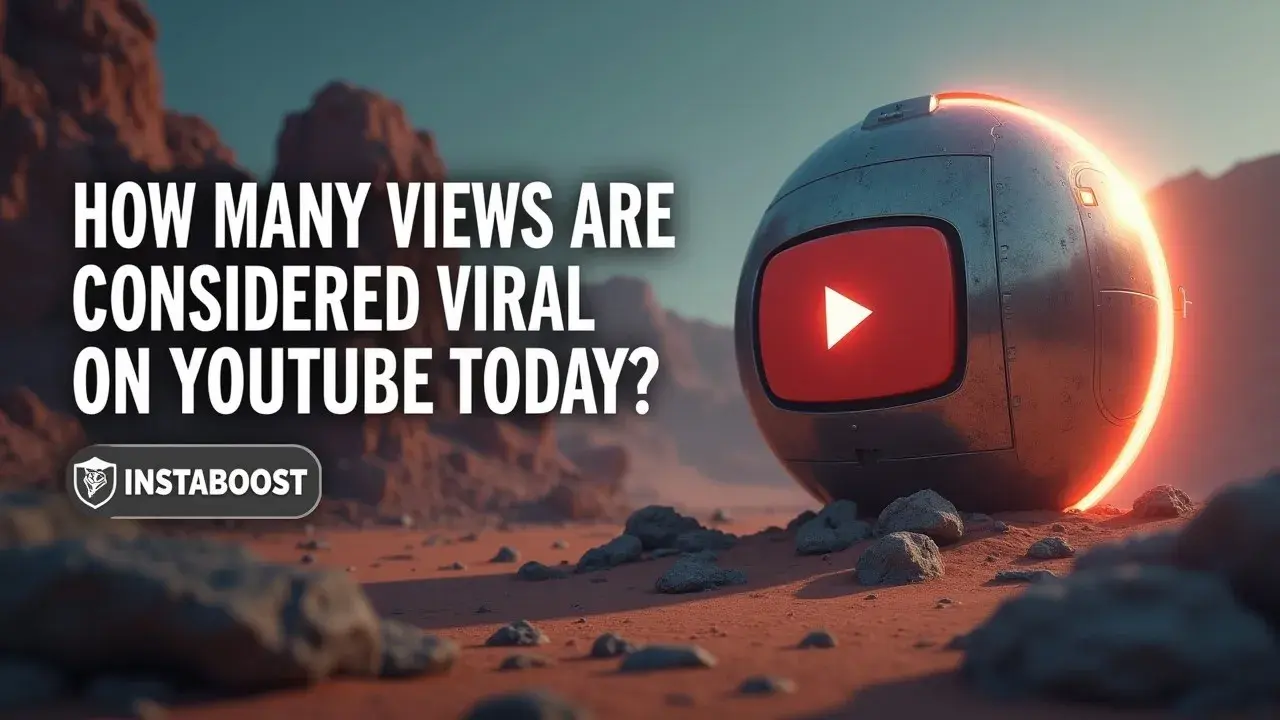How Many Views Are Considered Viral on YouTube Today?
Viral on YouTube is best gauged by rapid early momentum and strong watch time rather than a fixed view count. A sharp surge in the first hour that sustains retention indicates reach beyond the core audience. Building for that initial spike and tracking retention aligns content with how discovery works and keeps growth compounding. Prioritizing early engagement signals and audience hold can turn breakout moments into steady channel gains.
Why “Viral” Is a Moving Target on YouTube
The number that counts isn’t a magic threshold. It’s whether your video breaks out beyond your usual reach fast and keeps attention while it does. Think of “viral on YouTube” as a ratio of early momentum to your channel baseline, not a headline figure. A 10k-view spike in 60 minutes can be viral for a small channel if click-through rate and average view duration stay strong.
A million views can be routine for a giant if those retention signals sag. The recommendation system rewards proof that new viewers are sticking – high CTR from impressions, steady watch time past the 30-second mark, and comments that read like real conversation.
A million views can be routine for a giant if those retention signals sag. The recommendation system rewards proof that new viewers are sticking – high CTR from impressions, steady watch time past the 30-second mark, and comments that read like real conversation.
That’s why targeted promotion works when it’s matched to intent. Qualified pre-rolls, creator collabs, or a short run of performance ads can seed early momentum if the audience you attract keeps watching. The smart path is pairing a hook that earns clicks with a structure that sustains curiosity minute by minute, then validating with clean analytics before you scale; if you’re tightening your system for titles, packaging, and pacing as you develop your YouTube channel, those inputs compound. If you run paid, use reputable placements, cap frequency, and track cohorts separately so you can see what lifts organic reach.
Collaborations move faster when the partner’s audience overlaps your topic, and their intro frames why their viewers should care in the first 20 seconds. A practical benchmark people ask for – how many views are considered viral on YouTube today? – lands in ranges, not absolutes. Hitting 5 – 10x your 24-hour average within the first few hours is a strong signal. Hitting 20x with durable retention is breakaway. The non-obvious truth is you’re engineering a signal, not chasing a scoreboard. Get the signals right and the views follow – chase the views and the signals often fall apart.

What Data Signals Actually Call the Shot
Trust builds quietly, and YouTube virality works the same way – the system listens to signals, not slogans. If you want a credible answer to “how many views is viral on YouTube today,” compare results to your own baseline and watch how fast those ratios move. A small creator jumping from a typical 800 views per day to 10k in the first hour, with a click-through rate above 9% and average view duration holding over 50%, sends a stronger breakout signal than a big channel with a modest bump. That’s commercially useful because you can engineer these signals without gaming them. Pair a sharp hook with clean analytics – UTM-tagged shares and a clear split between paid and organic – and a tight testing loop on thumbnails and the first 30 seconds.
Qualified, targeted promotion works when it amplifies real retention, and a steady cadence of uploads that quietly build your subscriber base tends to compound those signals over time. Short bursts from a reputable ad source or a creator collab that brings aligned viewers beat cheap impressions. Real comments and saves are underrated accelerants, and replying in the first hour can reinforce momentum. Watch session starts and how many viewers go on to watch another video of yours. Breakout videos that feed a session tend to get rewarded. If you use paid traffic, throttle it with small, timed pulses to validate CTR and AVD before scaling, with safeguards against mismatched audiences. The non-obvious insight is that a “viral” view count is a lagging metric. The leading indicator is velocity-to-baseline combined with stable watch time. Build for that and you’ll trigger wider distribution faster than chasing an arbitrary number.
Design for Breakout, Not Luck
Real strategy plans for friction. If your goal is “viral on YouTube,” tighten the two levers you control most: how fast qualified viewers arrive and how long they stick. Treat the first 30 seconds like a landing page. Pay off the thumbnail cues right away, line up the hook with the title’s promise, and hit your first on-screen payoff before your usual drop-off point. Set a testing loop with 2 – 3 thumbnail and title variants ready, and roll them out in the first 90 minutes if CTR slips more than a point below your baseline. If you’re putting budget behind it, use targeted promotion as an accelerant, not a crutch.
Buy from reputable sources that let you reach intent-aligned audiences like search-based viewers and suggested-video neighbors, and track lift with clean analytics segments so you can separate real comments and average view duration from vanity traffic. Collab slots with creators whose viewers already binge similar topics often beat broad ads because session starts plus retention send stronger breakout signals. Seed the first wave by scheduling premieres when your highest-quality viewers are online, then answer early comments to nudge return visits and shares. If your small channel averages about 800 views a day, aim to engineer a spike to 10k in hour one while keeping CTR above 9% and average view duration at 50% or higher. That ratio, more than the raw spike, is what pushes the system to expand reach. It works when packaging, pacing, qualified promotion, and comment quality all point in the same direction, giving the algorithm clear proof that new viewers – not just your core – are sticking around.
Viral By Whose Math? Challenging the 100k Myth
No one tells you how lonely this gets. You ship a video, refresh the dashboard, and watch someone else’s “viral” hit outrun you before your thumbnail even loads. Here’s the pushback: counting raw views without context is like grading a marathon by the first mile split. On YouTube, “how many views is viral” shifts with your baseline and the speed – quality mix of the surge. A local spike that multiplies your norm by 10x in the first hour, paired with strong average view duration and a click-through rate a few points above your channel average, is a more reliable viral signal than a flat 100k number.
View count is a trailing indicator. Distribution is driven by early momentum from qualified viewers, retention signals, and authentic comments that show the topic is landing. That’s why targeted promotion, when matched to intent and pacing, can be a smart accelerant, and reputable ad bursts or creator collabs work when they deliver the right audience quickly, not just cheap impressions, much like the way you’d enhance your reach with YouTube views only if the lift aligns with audience fit and session depth. The safeguard is clean analytics: isolate traffic sources, treat the first 30 seconds like a landing page, and watch whether that first-hour lift holds rather than spikes and collapses.
If you’re considering paid reach, keep the quality bar simple. Can the traffic sustain session time and seed real discussions? If yes, momentum compounds. If not, the system shrugs. The non-obvious move is to define viral as a ratio change – views per minute and watch time per impression versus your norm – then optimize for that slope. That keeps your target honest, shields you from vanity thresholds, and turns “viral on YouTube” into an engineered outcome instead of a mood.
Viral Is A Moving Target – Here’s Your Next Move
Maybe the real takeaway is that it made you pause. Not the vanity play of “how many views is viral on YouTube,” but the system you can run on your next upload. If your clip gets a sharp surge from qualified viewers in the first hour and keeps watch time past your usual drop-off, you’re already designing for breakout, not luck. That’s your compass: acceleration plus retention. Put paid or earned promotion to work only when it’s matched to intent – reputable creators for collabs, targeted promotion that mirrors your title and thumbnail promise, and a clean analytics setup so you can read retention signals, comment quality, and browse vs. suggested splits without noise; even peripheral signals like saves or shares can quietly make your videos go further when they align with the narrative.
Treat ads like a lever, not a crutch. Run small, time-boxed flights to test hooks and the first 30 seconds, then pause fast if comments skew low-quality or average view duration dips. When a video hits, compound it. Pin a next-step video to catch spillover, update end screens to the highest-retaining sequel, and refresh the thumbnail if click-through rate lags the watch curve. If you miss, you still win by tightening the loop.
Isolate the opening payoff, ship an A/B title that clarifies the promise, and repackage for Shorts to spark new entry points. The crisp, non-obvious truth is that viral is less a threshold than a useful stress test of your channel’s system. If a video outruns your baseline 5 – 10x within 24 hours and real comments stack with saves and shares, lean in with a fast follow that rhymes with the pattern. Momentum favors creators who measure honestly and double down while the signal is loud.















